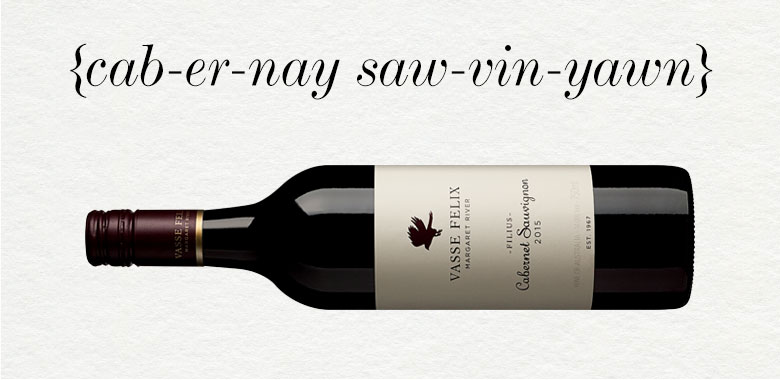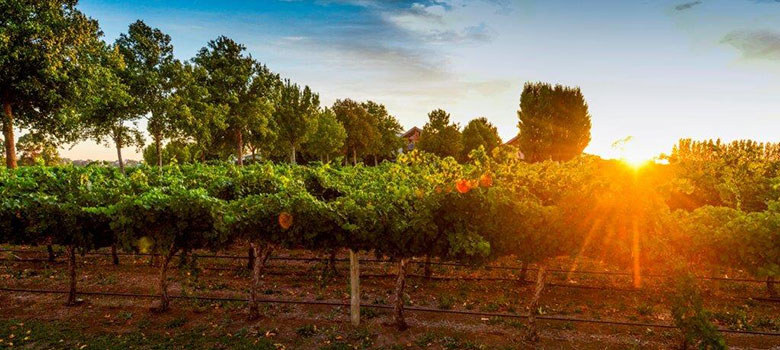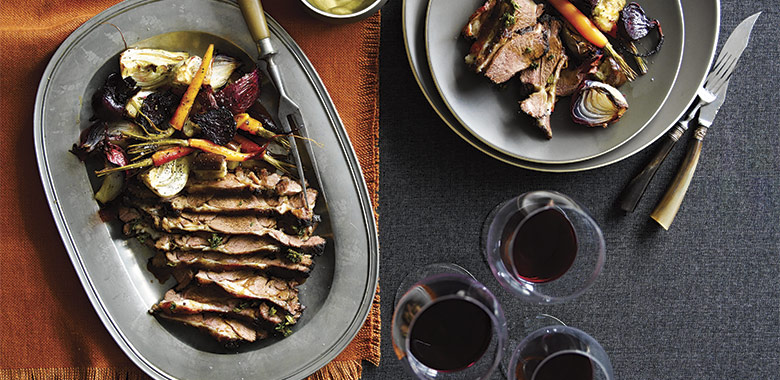
Wine
What is Cabernet Sauvignon?
It may not have the popularity of Shiraz, but Cabernet Sauvignon is the grape behind some of the world’s most noble wines. Big, brooding and flavoursome, Australian Cabernet Sauvignon has come to be regarded as among the world’s best.
Shop Cabernet Sauvignon
We explore its origins, leading Australian Cabernet regions like Coonawarra, and what foods go best with Cabernet in this varietal deep dive.
Cabernet Sauvignon is one of Australia's favourite red wine varietals. It thrives in moderate to cool climate wine regions such as Coonawarra and Margaret River.
Cabernet Sauvignon is best paired with foods high in fat, such as cheese and meats, to match the tannins. Cabernet Sauvignon can be cellared for up to 10 years.
Cabernet Sauvignon's profile is fuller-bodied with firm tannins. Did you know that Cabernet Sauvignon's best growing regions are by the sea?
Origins of Cabernet Sauvignon
The ‘birth’ of Cabernet Sauvignon is believed to have occurred in 17th century France, through a chance crossbreeding of Cabernet Franc and Sauvignon Blanc. And what a beautiful, happy accident that turned out to be!
While a relative youngling compared to other grapes, it’s since become one of the most popular red wine varieties in the world, and is grown in most every major wine producing country from California to Canada, France, Lebanon, Spain and, of course, Australia.
During the 18th century, when it was known variously as Petite Vidure or Bidure, it was believed to have been a wild variety native to France. It was even rumoured that is was used by the ancient Romans as early as 200 BC as a component in their red wine, which Pliny the Elder recorded as being made from the Biturica grape.
Scientists finally dispelled such speculations in 1996, when DNA sequencing revealed the grape’s true parentage of Cabernet Franc and Sauvignon Blanc – something that viticultural experts had long suspected, due to the similar aromas Cabernet Sauvignon shares with both varieties.
Regardless of its parentage, its status as one of the key Bordeaux wines helped drive its international status throughout the 18th and 19th centuries, and today you’ll find many wine lovers who believe its flavour and tannin power make it one of the best red wine varieties in the world. Indeed, some have even gone so far as to refer to it as ‘the King of red wine’!
Cabernet Sauvignon in Australia

Cabernet Sauvignon arrived in Australia in the James Busby collection in 1832, and despite early challenges – many of the initial rootstock died due to poorly chosen sites – it has since become one of Australia’s true wine success stories.
Its star truly began to rise in the 1970s, with the success of Coonawarra and Margaret River Cabernets, which attracted acclaim for their intense fruit flavours and tight structure. These two regions are generally considered the home of the country’s best Cabernet Sauvignon, though other regions – among them Barossa Valley, Langhorne Creek, McLaren Vale and Clare Valley in South Australia, Mount Barker in Western Australia and Victoria’s Yarra Valley – have also seen considerable success with the variety.
Indeed, the Barossa Valley is home to what are believed to be the oldest continually-producing Cabernet Sauvignon vines in the world: Penfolds Kalimna Block 42. Each region’s differing climate and soils result in characteristic flavour profiles, and as such it’s a variety that can be expressed in a multitude of ways. As in the Bordeaux, it is often used in blends. Typically paired with Merlot, Cabernet Franc, or Shiraz to great effect, it has been an instrumental component in some of Australia’s best dry red wines.
Top Australian Cabernet Sauvignon Regions
Moderate/warm climate Cabernets
-
Coonawarra
-
Margaret River
-
McLaren Vale
-
Barossa Valley
-
Langhorne Creek
Cool climate Cabernets
-
Eden Valley
-
Clare Valley
-
Pyrenees
-
Yarra Valley
Warm Climate Versus Cool Climate Cabernet Sauvignon

There are also distinct differences in cool climate versus warm climate Cabernet Sauvignon. While Cabernet prefers to grow in warmer areas close to the coast, where it presents with riper, richer fruit flavours, and softer tannins, it can certainly perform well in cooler climes given the right conditions and care. Victoria’s Yarra Valley and Pyrenees regions, and South Australia’s Clare Valley, are generally elegant with somewhat more restrained fruit flavours, with varietal complexity and tight tannin structure.
What Does Cabernet Sauvignon Taste Like?
Cabernet Sauvignon is best known for having a rich palate of black fruits like blackcurrant, black cherry and plum, with varietal characters of liquorice, mint, cedar and even eucalyptus.
The best Cabernets are capable of ageing for many years – even decades – softening over time, while retaining their fruit characters. A full-bodied red with fine yet firm tannins, it’s similar in weight to Merlot, Shiraz and Tempranillo.
Several factors are responsible for determining the intensity, complexity and longevity of a Cabernet Sauvignon, beyond where it’s grown. These include how the vines are managed, and the winemaker’s approach in the winery, such as how oak is used in its maturing process.
Best Food Pairings for Cabernet Sauvignon

Cabernet Sauvignon is one of the best red wines to pair with meat dishes. Its rich body, balanced acidity and slightly herbaceous notes make it more than a match for all manner of indulgent dishes, from barbeques to slow cooked meats.
Without doubt, however, the signature food to pair with Cabernet is lamb. However it’s cooked, Cabernet’s tannins are able to cut through the rich, fatty flavours of this popular red meat, to provide a wonderfully balanced combination for your palate to take pleasure in.
Hard or cloth-aged cheeses are another classic pairing, as are dishes featuring warm, earthy spices such as Moroccan food. Avoid anything too spicy, however, as the heat of the dish will likely be accentuated by the Cabernet.
We also recommend not pairing Cabernet with dishes of lighter flavour and texture, such as fish, as the fruit power of the wine will override the more subtle characters of the meal. Also, due to Cabernet’s tannic nature, any bitter qualities in a dish will be exaggerated, so keep that in mind also.
Suggested Food and Cabernet Pairings
We make no secret of our love for Cabernet, and it’s a love that’s only exceeded by pairing it with a delicious recipe from our friends at Selector magazine. Here are some of our favourites!
Lamb and Cabernet Food Pairings
Grilled lamb cutlets with three sauces
Lamb Wellington
Lamb ragout with pappardelle
Slow roasted Baharat lamb
Slow roasted lamb with paprika
Aussie lamb burger
Beef and Cabernet Food Pairings
Fillet of beef – Burgundy style
Eva’s beef tartare
Beef and olive empanadas
Beef cheeks, parsnip purée and watercress
Slow cooked beef cheek with cauliflower purée
Beef short ribs, treacle glaze, celeriac and mushroom
Veggie Food and Cabernet Food Pairings
Greek-style barbequed vegetables with haloumi and thyme crumb
Spiced roasted vegetable salad
Pappardelle mushroom ragu
Mushroom and garlic orecchiette
Looking for more great food and wine pairings? Check out our cheese and wine matching guide! Or dive in and learn more about Australia’s other great red wine varieties with our Shiraz and Pinot Noir guides. What are you waiting for? Crack open a bottle of Australian Cabernet, and revel in its majesty!